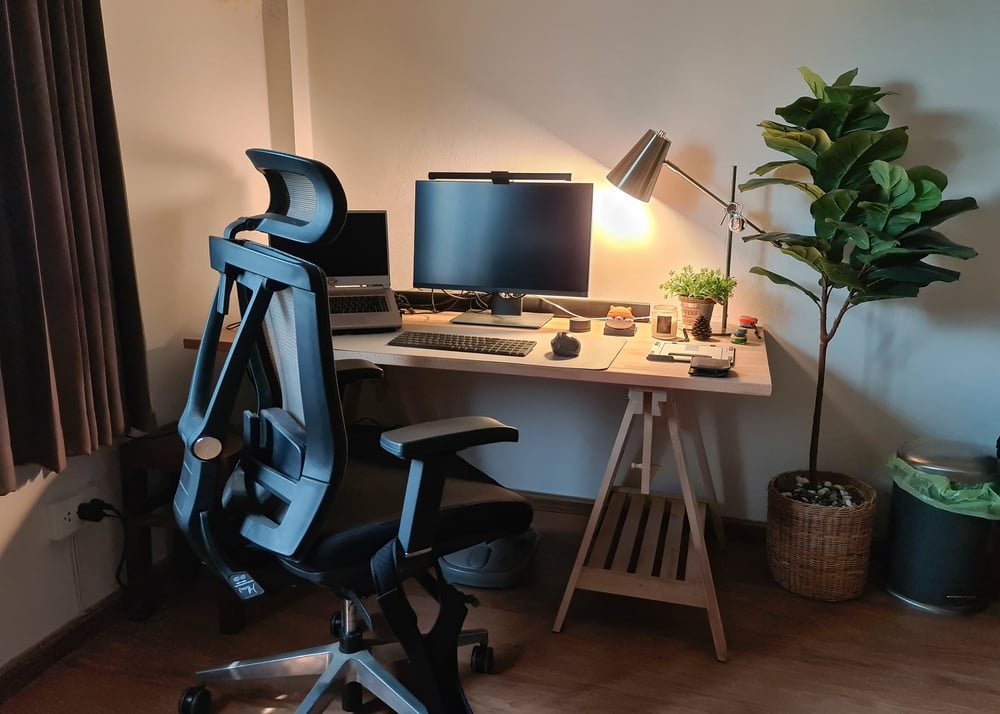
How an Ergonomic Assessment Can Help the Whole Office
It’s no secret that North American workers are becoming increasingly aware of what is known as The Sitting Disease. The average Canadian office worker sits at their desk approximately 10 hours per day, not accounting for sitting that is done during their commute and on personal time. Prolonged sedentary behavior poses both health risks for employees and financial risks for the employer.
Research has shown that metabolic rate (the amount of energy used by the body) observes a 90% drop after 30 consecutive minutes of sitting. Compared to workers who sit for less than 4 hours per day, office workers double their risk of developing Type 2 diabetes and cardiovascular disease. What’s more, hitting your physical activity goals per day does not negate the health consequences of sitting for 8 or more hours per day.
In the US, musculoskeletal disorders contribute approximately 1/3 of injury and illness costs to businesses. Many of these claimed injuries come from office workers experiencing low back pain, upper back and neck pain, wrist and arm pain, and the development of nerve related issues from poor posture, with nearly a quarter of office workers experiencing extreme pain at the end of the day. On average, businesses take on an additional expense between $24,000 and $60,000 per occurrence of carpal tunnel syndrome in their employees, who miss an average of 23 work days per year.
Though the Canadian Center for Occupational Health and Safety [COHS] exists for workplace related matters, there are no workplace laws that require employers to meet certain ergonomic standards. The COHS recommends minimal adjustments for desk workers to adjust positioning of the screen and keyboard, however, these result in minimal benefits. To properly improve your workplace, you'll need to hire a professional.

Ensure your office is ergonomically-friendly with professional help
Bringing in a well-trained, experienced ergonomic assessor to examine a workstation can initiate a chain of positive benefits for the whole workplace. Changes to a work station can include: modifications to the chair, desk height, keyboard and mouse placement, monitor positioning, and implementation of adaptive equipment that's more ergonomically sound. Implementing ergonomic changes reduces the risk of musculoskeletal disorders occurring, reduces the amount of discomfort and pain employees feel, and results in less days missed due to pain and injury.
Effective ergonomic adaptations have shown to reduce claims and costs of work related injuries by up to 75%. However, ergonomic adaptations are more than just a change in equipment; full buy-in from the employee and the employer are required to make an ergonomic change effective. A vital part of the ergonomic assessment is the assessor providing education to the client on how to effectively manage their time and workspace to reduce the amount of stress and strain experienced by the body (ie. stretch breaks, change in posture, walking to talk to colleagues, etc.) 
On the employers’ side, it is their responsibility to implement and enforce helpful policies, such as scheduled breaks or placing key equipment, such as printers and copiers, in a place that requires employees to walk to them. As little as standing up for 5 minutes every hour can reverse nearly half of the negative effects of prolonged sitting.
What about a standing desk?
When people think of ergonomically-friendly workplace equipment, they often picture a standing desk. Sit-stand desks continue to grow in popularity in offices across the country, and will continue to do so as awareness increases. While they’re nothing new, their stock began to climb following the popularization of The Sitting Disease in the early-mid 2010’s as workers became aware of the negative impact of their sedentary lifestyle.
Standing statically has been proven to increase stress on the cardiovascular system and primary joints (ie. hips, knees and ankles), and increases postural fatigue in the neck and shoulders. The theory behind a sit-stand unit is to mitigate the effects of prolonged sitting and standing by having the worker frequently shift between the two positions. However, there are two contradictions to this: dynamic movement is what’s necessary to mitigate the effects of sitting, not static standing, and a large majority of sit-stand workers are often caught up in their tasks and will forget to alternate their position. Indeed, evidence shows “No solid evidence that the use of sit-stand workstations impact health outcomes” and "less than 10% of employees use sit-stand workstations after 3 to 6 months of use.”
Change your health outcomes for the better
To maximize the potential of ergonomic equipment and alter the health outcomes of an office worker, the entire work environment including, human resource policies and management strategies, must be considered. If you’re serious about bettering your health due to the nature of your job, invest in an ergonomic assessment. An assessor will be able to make or suggest modifications to your current work station, body biomechanics, and recommend appropriate equipment, as well as work with management and HR to review and implement policies that promote dynamic movement and changing of positions.
Typically, implementation of assistive equipment/devices and enforcement of HR policies yield positive results for the employee. Whether you’re in human resources responsible for identifying cost-effective strategies for an office, a health practitioner with a patient reporting work-related pains, or a worker, an ergonomic assessment will be your best investment for long-term, cost-efficient relief. For more help managing your workplace wellness, head to Lifemark.ca to book an appointment with an Occupational Therapist.



